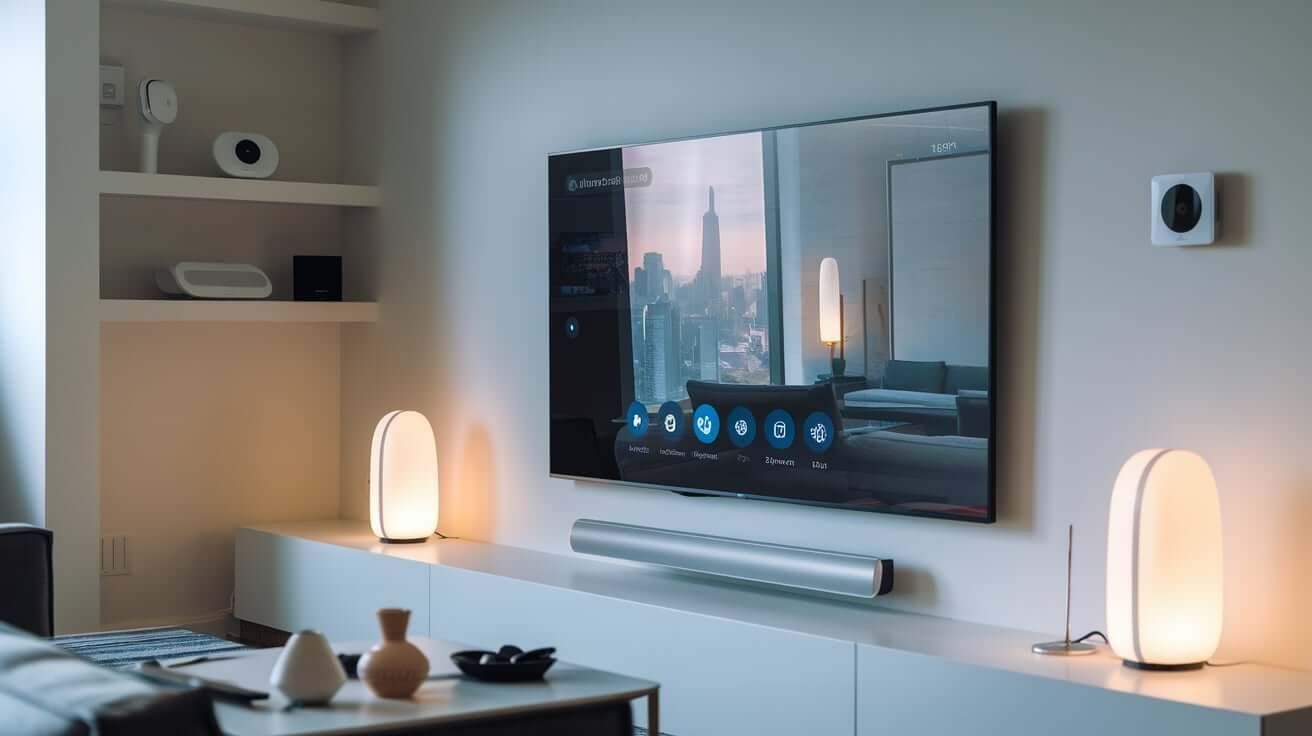The Future of Home Technology: 5 Key Components of Smart Homes
In the modern age, the future of home technology is revolutionizing the way we interact with our living spaces. The rise of these advanced systems is creating a significant shift in how we perform daily tasks, manage our homes, and engage with our environments. From energy efficiency to enhanced security, the potential for smart homes to shape our daily routines is immense. In this article, we will explore the most innovative smart home solutions, their advantages, and the ways they are transforming modern living.
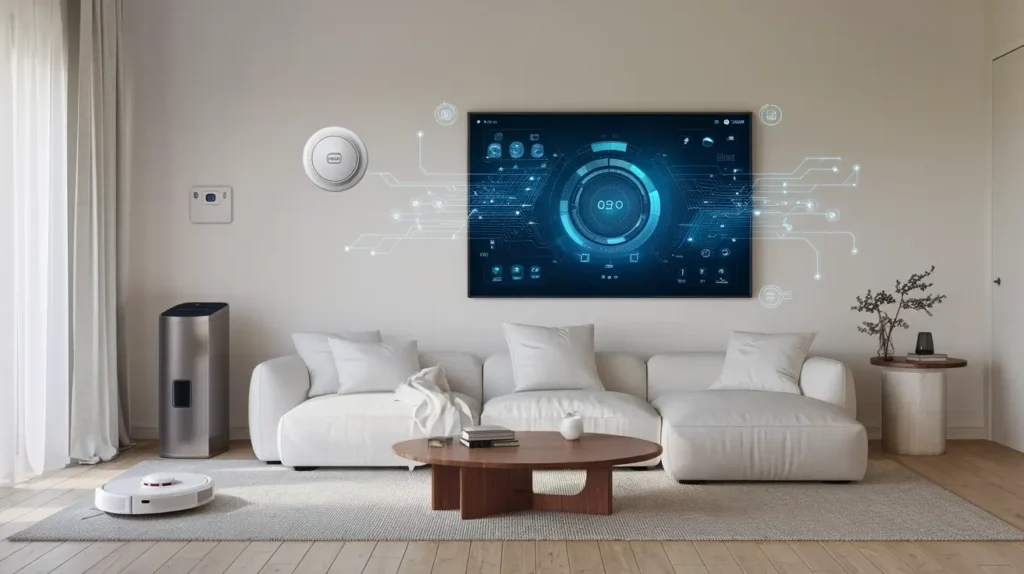
What is Smart Home Technology?
Smart home technology refers to a suite of devices, systems, and applications that can be controlled remotely and work in synergy to automate, monitor, and manage household functions. Typically, these devices connect through a centralized platform, such as a smartphone app or a voice-activated assistant, enabling users to control various aspects of their home from anywhere in the world.
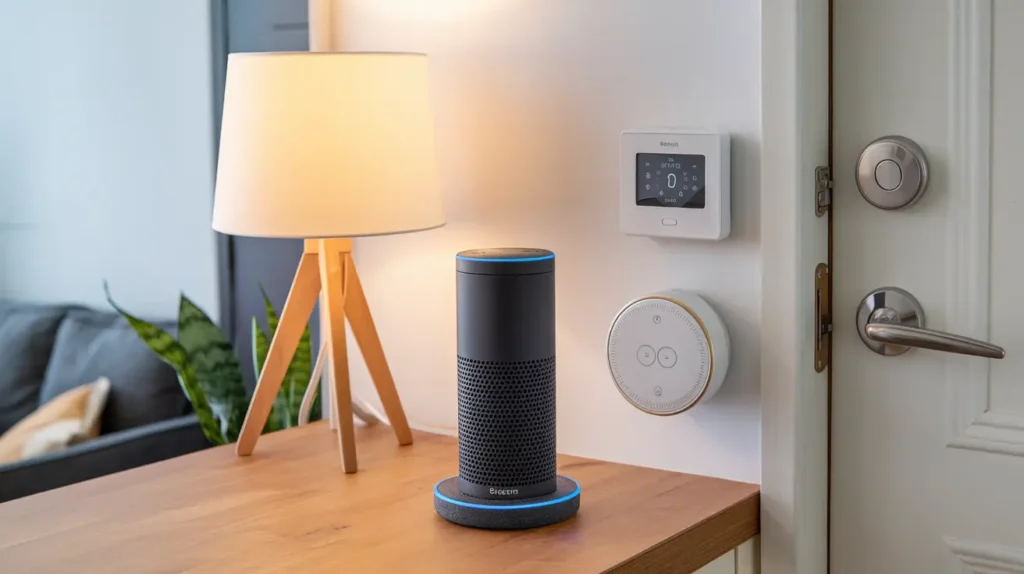
From smart thermostats that adjust temperatures to suit your schedule, to automated lighting that optimizes ambiance and energy consumption, smart home devices are making homes more comfortable and convenient. Additionally, they provide valuable data and insights, allowing homeowners to make informed decisions about their living environment.
The Future of Home Technology: Advantages of Smart Homes
1. Enhanced Security and Surveillance
One of the primary reasons for the rapid adoption of smart home technology is the improvement in home security. Smart homes enable advanced security measures that go beyond traditional locks and alarms. With smart cameras, motion detectors, and smart locks, homeowners have more control and visibility over their property. Video doorbells are another popular addition, allowing homeowners to monitor visitors and receive alerts whenever someone approaches their door.
Smart security systems can also be integrated with AI algorithms to detect unusual patterns or behaviors, sending instant alerts to homeowners or security services if a potential threat is detected. This level of security not only increases peace of mind but also contributes to reducing crime rates in communities where smart home adoption is high.
2. Energy Efficiency and Cost Savings
Energy management is another significant benefit of smart homes. Devices such as smart thermostats, smart lighting, and energy-efficient appliances are designed to optimize energy consumption. For example, a smart thermostat can learn a user’s preferences, adjusting temperatures based on routines and reducing unnecessary heating or cooling.
Smart lighting systems are also designed to save energy. These systems can be programmed to turn off lights when rooms are empty, or even adjust lighting based on the natural sunlight in a room. By reducing energy waste, smart homes help homeowners lower their utility bills and minimize their environmental footprint.
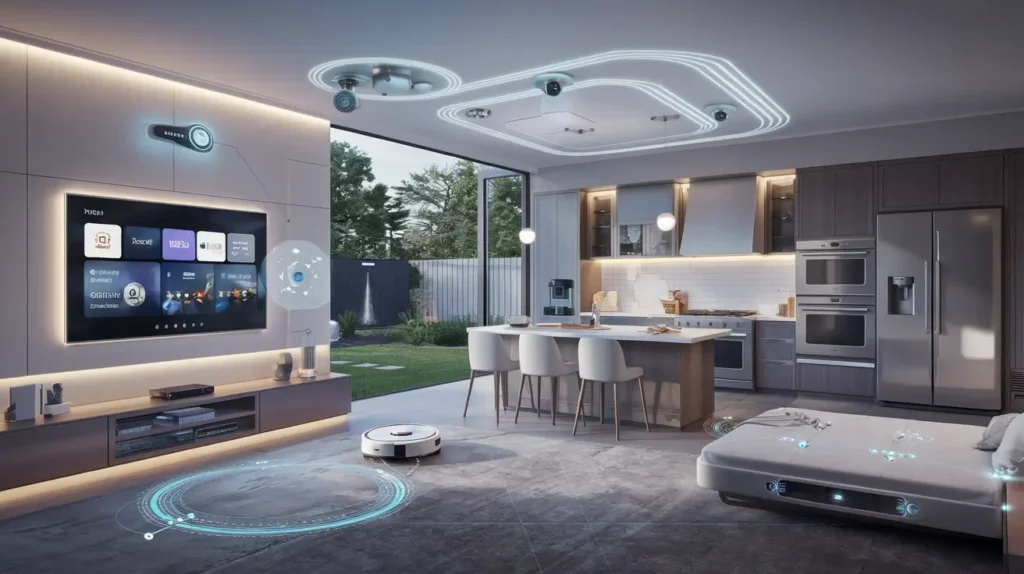
3. Convenience and Customization
A smart home allows for a level of convenience and customization that is unmatched by traditional home setups. With integrated systems, homeowners can control and customize nearly every aspect of their living environment. For instance, smart assistants like Amazon Alexa and Google Assistant can manage multiple devices through voice commands, enabling hands-free control of lighting, entertainment, and even appliances.
Furthermore, smart home platforms enable the automation of routine tasks, such as watering the garden, adjusting shades, or even cleaning floors with robotic vacuum cleaners. This convenience not only saves time but also allows homeowners to personalize their living spaces according to their unique preferences.
4. Health and Well-being Improvements
Smart homes contribute to health and well-being by enhancing indoor environments. Smart air purifiers and humidity controllers help maintain optimal air quality, which is essential for respiratory health. Similarly, smart lighting systems can adjust their brightness and color temperature to support circadian rhythms, promoting better sleep and overall health.
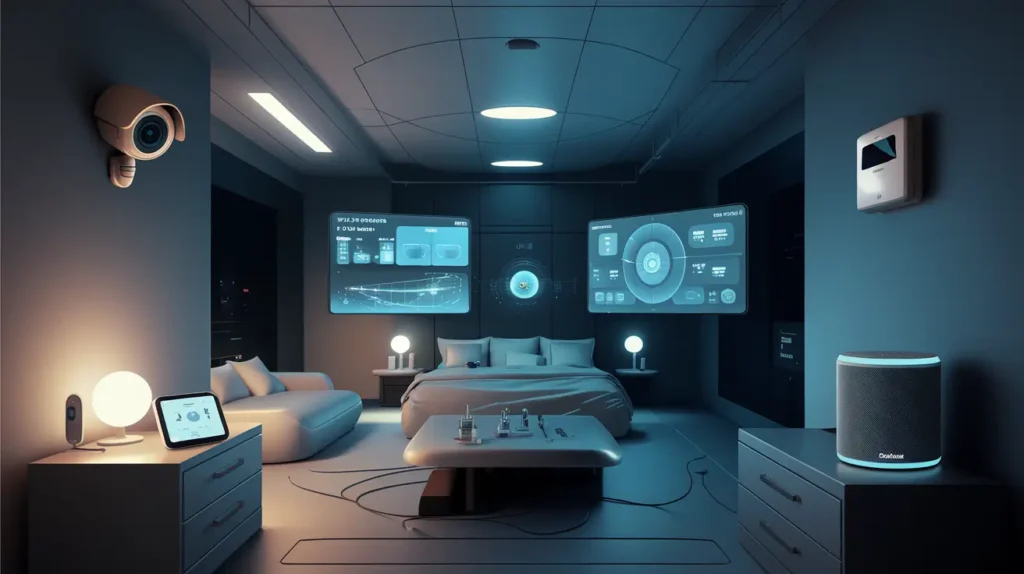
There are also health-monitoring systems that track movement and activity within the home, which can be particularly beneficial for the elderly or individuals with health conditions. These systems can alert family members or caregivers if there are sudden changes in activity, ensuring that help is available when needed.
The Future of Home Technology: Key Components of Smart Homes
1. Smart Lighting
Smart lighting systems are one of the most popular smart home features. These systems allow users to control lights remotely and program specific settings for different times of the day. Many smart lighting solutions can adjust brightness and color to create the desired ambiance, enhancing comfort and mood.
Additionally, smart lighting can help reduce energy consumption by automatically turning off lights in unoccupied rooms. Some advanced systems even incorporate motion detection to ensure lights are used only when necessary.
2. Smart Thermostats
Smart thermostats are designed to optimize heating and cooling within the home. They learn user preferences over time and adjust temperatures accordingly, providing comfort while minimizing energy use. Users can also control these thermostats remotely, allowing them to set the temperature before they arrive home or adjust it from afar.
By reducing the need for manual temperature control, smart thermostats make home temperature regulation both convenient and energy-efficient, leading to significant cost savings.
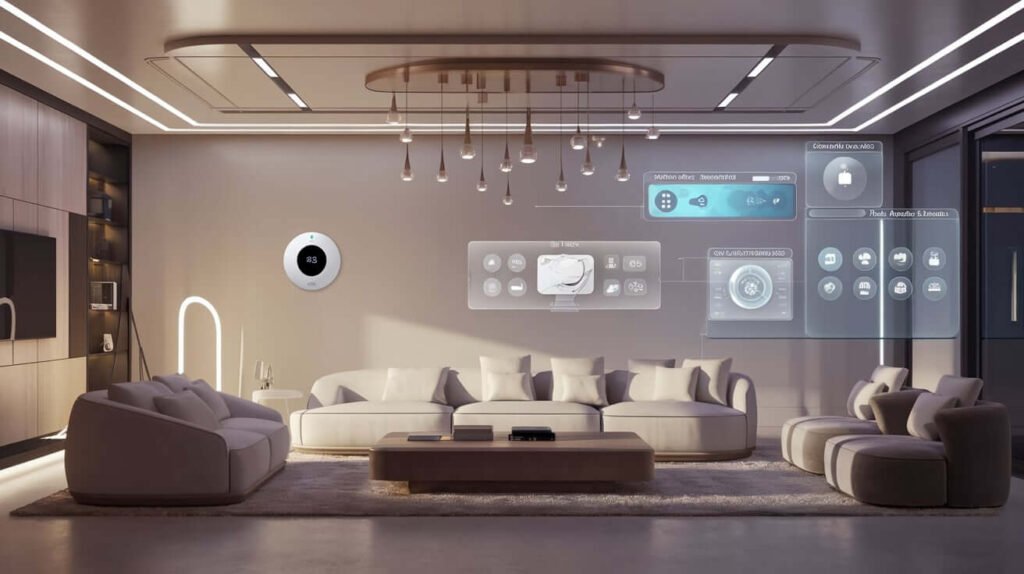
3. Home Automation Hubs
Home automation hubs, such as Amazon Echo, Google Home, and Apple HomeKit, serve as the central control system for a smart home. These devices connect and coordinate various smart home devices, enabling seamless integration and control. Through these hubs, users can manage everything from security systems to appliances, lighting, and entertainment systems.
Many hubs also incorporate AI capabilities to anticipate user needs, enhancing the overall smart home experience by learning from user interactions and patterns.
4. Smart Appliances
Smart appliances, including refrigerators, washing machines, and ovens, add convenience and efficiency to daily household tasks. For example, smart refrigerators can provide real-time inventory updates and suggest recipes based on available ingredients. Smart ovens can be preheated remotely or programmed to cook meals with precise timing, ensuring perfectly prepared dishes.
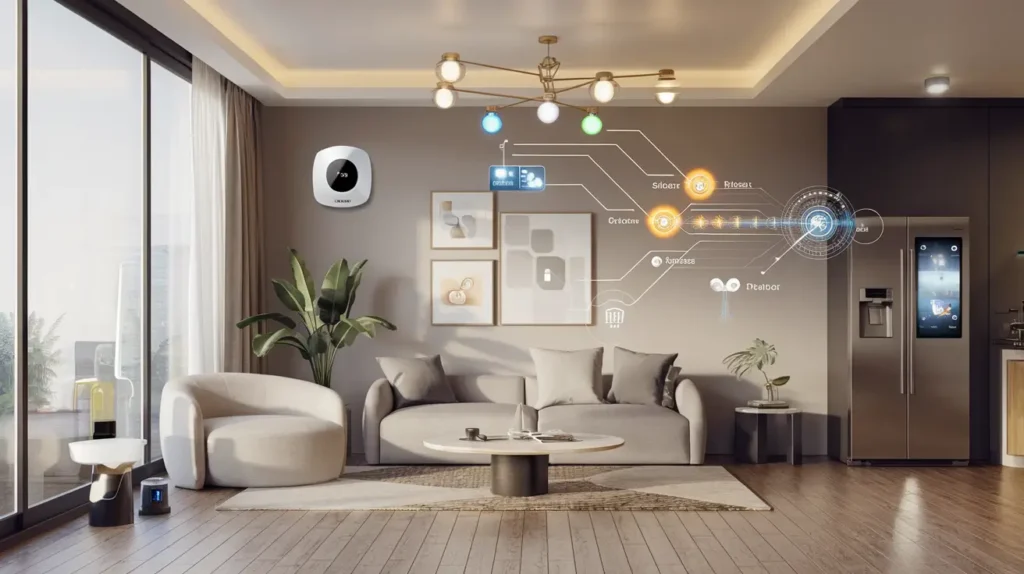
These appliances not only save time but also allow for more efficient resource use, contributing to both cost savings and convenience.
How Smart Homes Are Shaping the Future
1. Integration with IoT (Internet of Things)
Smart homes are part of the broader Internet of Things (IoT) landscape, where interconnected devices share data and improve user experiences. As more devices become IoT-enabled, smart homes will become even more sophisticated, with seamless communication between devices.
For instance, in the future, a smart home system could analyze weather forecasts to optimize energy use, or synchronize with traffic reports to provide timely updates for users on the go. This level of integration will make homes smarter, more efficient, and highly personalized.
2. The Role of Artificial Intelligence in Smart Homes
Artificial intelligence (AI) is rapidly advancing, and its role in smart homes is becoming more significant. AI algorithms can predict user preferences, optimize energy use, and even improve security through advanced threat detection. By learning user habits, AI-driven systems provide a personalized and adaptive living environment that responds to user needs in real time.
Future developments in AI could enable even greater automation and predictive capabilities, allowing smart homes to anticipate needs and automate a broader range of functions, making life more comfortable and convenient.

3. Environmental Impact and Sustainability
As sustainability becomes a priority, smart homes offer a promising solution for reducing carbon footprints and promoting environmental responsibility. Energy-efficient devices and systems not only reduce household energy use but also minimize greenhouse gas emissions.
Smart homes also support sustainable practices by allowing users to monitor water and electricity consumption closely, encouraging responsible use. In this way, smart homes contribute to a more sustainable future by helping individuals and communities adopt greener lifestyles.
Challenges and Considerations in Smart Home Adoption
Despite the many advantages, the widespread adoption of smart home technology comes with challenges that both consumers and the industry must address to maximize benefits and minimize potential drawbacks.
1. Privacy and Data Security Concerns
One of the major issues with smart home technology is data privacy. With numerous connected devices in the home, vast amounts of personal data—such as usage habits, location, and even conversations—are collected and stored. This data is valuable for enhancing the smart home experience, but it can also be vulnerable to security breaches.
Manufacturers and service providers are under increasing pressure to implement robust cybersecurity measures and transparent data management practices. For consumers, it is essential to understand privacy settings, use strong passwords, and regularly update software to ensure protection against data breaches. As smart homes become more commonplace, laws and regulations will likely evolve to address these privacy concerns, helping to create a safer environment for all users.
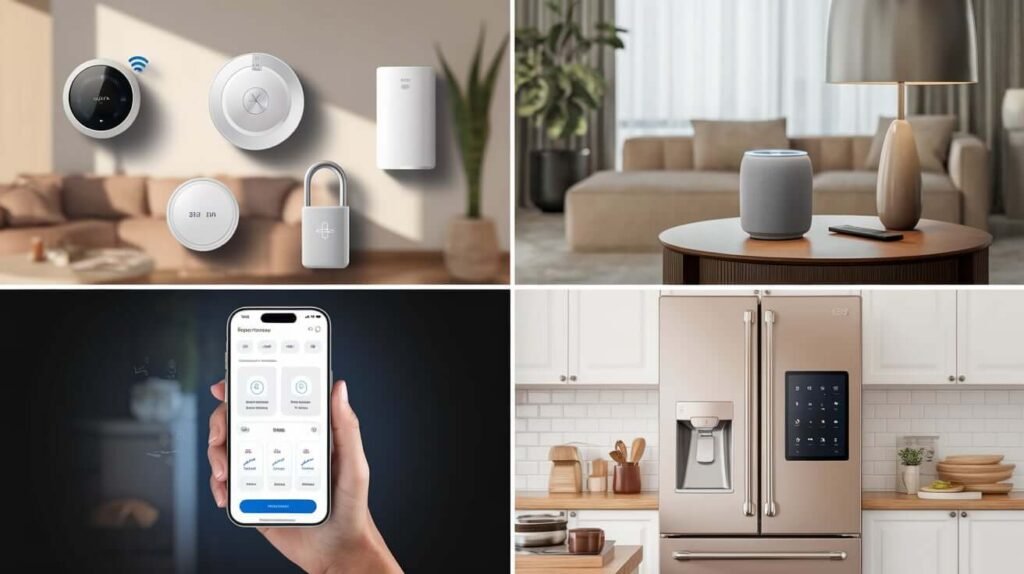
2. Compatibility and Interoperability Issues
Not all smart home devices are compatible with each other, which can lead to frustrations for consumers attempting to build a cohesive, interconnected home system. Different brands often use different communication protocols, meaning that a smart thermostat from one brand might not seamlessly work with a smart light system from another.
To overcome this, many manufacturers are working toward standardization, and initiatives like Matter—a protocol backed by major tech companies including Apple, Google, and Amazon—are promising more interoperable smart home solutions. This drive for compatibility and interoperability will be key to ensuring a more seamless user experience and encouraging broader adoption.
3. Cost and Accessibility
Smart home devices often come with a high upfront cost, which can be a barrier to entry for many households. Although these devices can lead to long-term cost savings through energy efficiency, the initial investment remains a concern for those on a budget. As smart home technology matures, we can expect prices to decrease, making these systems more accessible to a broader audience.
Moreover, governments and organizations promoting sustainable practices may start offering incentives or rebates for the adoption of energy-efficient smart home technology, further lowering the barrier to entry.
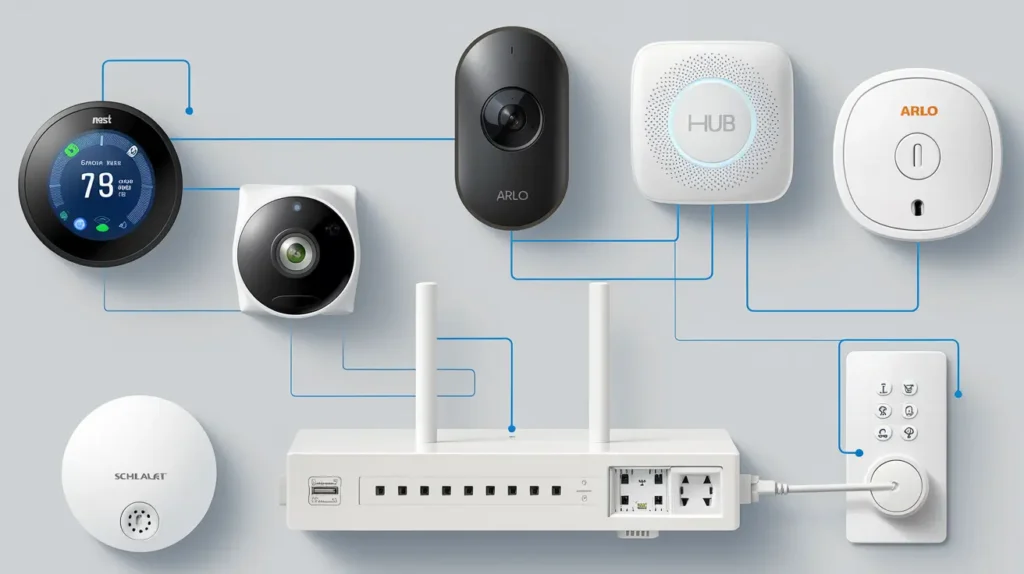
4. Complexity and Usability
With a vast array of smart devices on the market, setting up and managing a smart home system can feel overwhelming. Some systems require significant customization and technical knowledge, which may deter users who are not tech-savvy. Simplifying setup processes and improving usability through intuitive interfaces and clear instructions will be crucial for the industry to make smart home technology accessible to all.
Manufacturers are increasingly prioritizing user-friendly designs that make installation and control straightforward. Improved user experiences, along with advancements in voice control and AI-driven automation, will continue to make smart home systems easier to navigate, enhancing overall user satisfaction.
The Future of Home Technology: What Lies Ahead?
Smart home technology is poised to undergo rapid evolution, transforming not just our homes but also our way of life. Here are a few trends and advancements we can expect to see in the near future.
1. More Advanced AI and Machine Learning Integration
The next generation of smart homes will leverage AI and machine learning to a much greater extent, enabling systems that learn from user behavior and make proactive adjustments. AI will not only facilitate greater automation but will also allow homes to “self-diagnose” issues, identify inefficiencies, and provide recommendations on maintenance or upgrades. For instance, a smart home might suggest adjusting heating patterns to reduce costs or alert homeowners to potential security vulnerabilities.
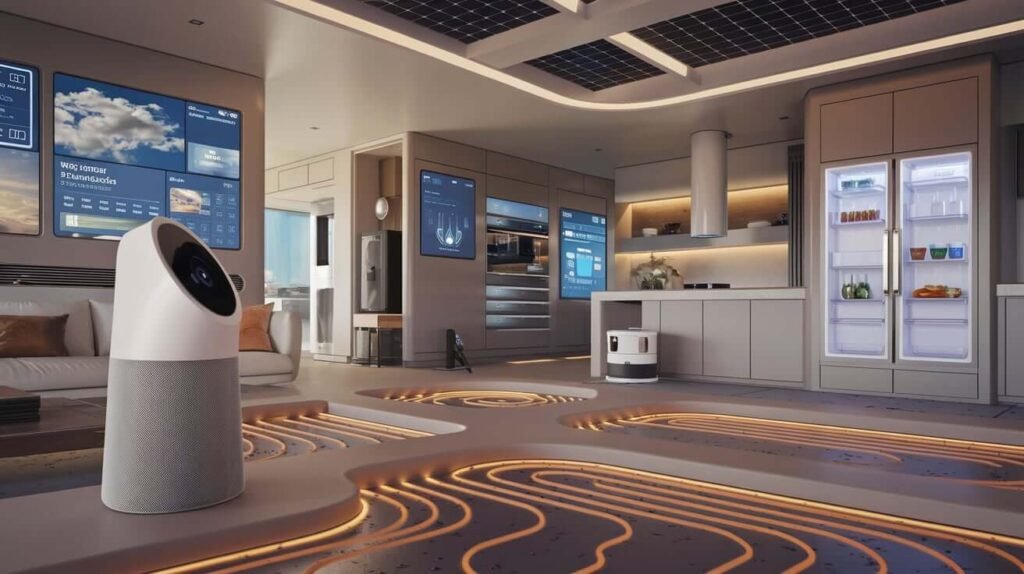
2. Expanded Use of Renewable Energy
As sustainability becomes a primary focus, smart homes will increasingly integrate renewable energy sources, such as solar panels and home batteries, which can store excess energy for later use. Energy management systems will become more sophisticated, optimizing energy usage based on availability and real-time pricing.
The integration of renewable energy with smart home technology can lead to energy self-sufficiency, where homes are less dependent on the grid, lowering energy costs and reducing environmental impact. This trend is already visible in some regions, and as technology advances, we can expect even greater efficiency in energy management.
3. Smart Cities and Connected Communities
Smart home technology will not exist in isolation; it will eventually contribute to smart cities and connected communities. Through advanced IoT infrastructure, data collected from smart homes will be used to improve public services, traffic management, and energy distribution on a larger scale.
Imagine a city where residential energy consumption patterns are analyzed to adjust power grid loads in real time, or where public transportation schedules are aligned with community habits to reduce wait times and increase efficiency. By connecting individual smart homes to a larger network, entire cities can operate more efficiently, enhancing the quality of life for all residents.
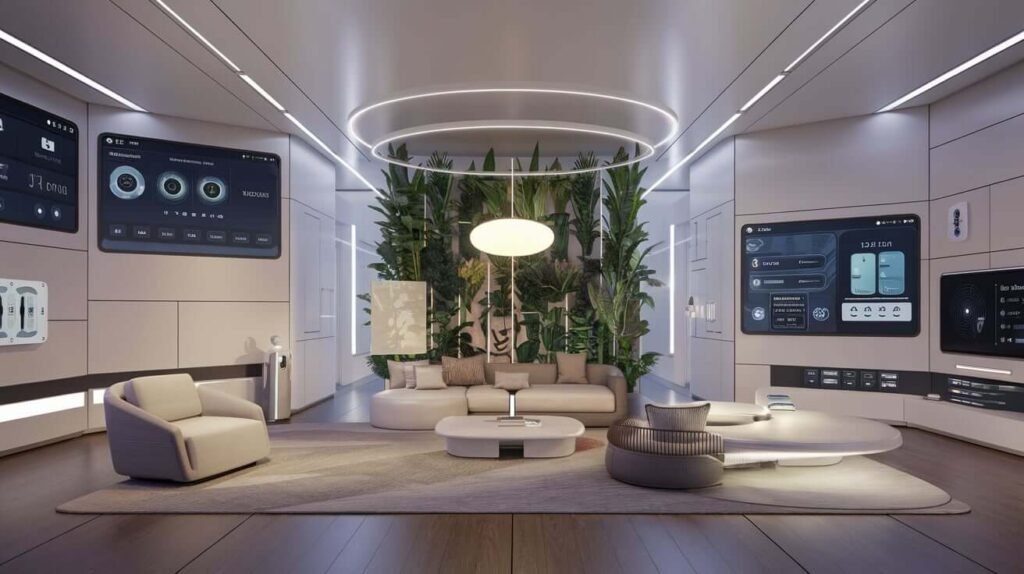
4. Enhanced Health and Well-Being Monitoring
The healthcare sector is also set to benefit from smart home innovations. Future smart homes will likely include more health-monitoring technologies integrated into everyday living spaces. These systems could track vital signs, detect falls, or monitor for symptoms of illness, alerting healthcare providers or family members if needed. This can be especially beneficial for the elderly, allowing them to live independently while ensuring their well-being is constantly monitored.
These advancements will not only contribute to a better quality of life but also open new possibilities for personalized healthcare through continuous data collection and real-time health monitoring.
Conclusion: Embracing the Smart Home Revolution
The journey toward fully integrated smart homes has already begun, and the impacts on daily life are both profound and far-reaching. From enhanced security to significant energy savings and an improved quality of life, smart home technology offers a wealth of benefits that are transforming modern living. As AI, IoT, and sustainable technologies continue to advance, the potential of smart homes will only grow, making our lives more efficient, safe, and enjoyable.
However, challenges such as privacy concerns, compatibility issues, and costs must be addressed to ensure a smooth and equitable transition to this new era of living. With continued innovation and an increased focus on user-friendly solutions, the future of smart homes is bright, promising a more connected, convenient, and sustainable way of life for all.
Frequently Asked Questions (FAQs) about The Future of Home Technology
1. What is a Smart Home?
A smart home is a residence equipped with connected devices and systems that automate various tasks, monitor home functions, and provide remote control options. These devices typically work through a centralized platform, such as a mobile app or voice assistant, allowing users to manage security, lighting, temperature, and more from anywhere.
2. How do smart home devices communicate with each other?
Smart home devices communicate through various wireless protocols, including Wi-Fi, Bluetooth, Zigbee, and Z-Wave. Many devices connect to a central hub or app, enabling them to work together seamlessly. Protocols like Matter are being developed to improve interoperability between devices from different brands.
3. What are the main benefits of smart home technology?
Smart homes offer numerous benefits, including:
–Enhanced security through smart cameras, locks, and alarms.
–Energy efficiency with devices like smart thermostats and lighting.
–Convenience and automation of routine tasks.
–Health and wellness improvements with air quality monitors and sleep-supporting lighting.
4. Are smart home devices secure?
While smart home devices offer advanced features, they can be vulnerable to hacking if not properly secured. It’s essential to use strong passwords, regularly update devices, and be cautious about sharing personal information. Many manufacturers also offer enhanced security features, such as encryption and two-factor authentication.
5. Can I install smart home devices myself, or do I need a professional?
Many smart home devices are designed for easy installation and can be set up by homeowners. However, some systems, like complex security setups or integrated HVAC systems, may require professional installation to ensure optimal performance and safety.
6. Do smart homes help save money on utility bills?
Yes, smart home devices like smart thermostats, energy-efficient lighting, and smart plugs help reduce energy consumption, leading to lower utility bills. By optimizing energy use, these devices allow homeowners to save money in the long term.
7. What is the cost of converting my home into a smart home?
The cost of building a smart home depends on the number and type of devices installed. Basic setups with a few smart bulbs or a thermostat may cost under $500, while a fully integrated system with smart security, climate control, and appliances could range from several thousand dollars or more.
8. How do smart thermostats work?
Smart thermostats learn your schedule and temperature preferences over time. They adjust temperatures automatically to suit your needs and can be controlled remotely. By reducing unnecessary heating or cooling, they help lower energy consumption and improve comfort.
9. Are smart home systems compatible with renewable energy sources like solar panels?
Yes, many smart home systems can integrate with renewable energy sources. Some setups allow homeowners to optimize the use of stored solar energy, making the home more sustainable and energy-efficient.
10. What are some popular smart home platforms?
Popular smart home platforms include Amazon Alexa, Google Home, and Apple HomeKit. These platforms connect to a wide variety of smart devices, allowing users to control them through a single app or voice commands, making home automation simple and centralized.
11. What role will AI play in the future of smart homes?
AI will play a significant role by making smart homes more responsive and predictive. With AI, homes can learn user preferences, anticipate needs, and automate tasks more effectively. This will lead to enhanced comfort, security, and energy management in the future.
12. Do smart homes increase the resale value of a property?
Yes, smart homes often have a higher resale value because they offer modern features and conveniences that appeal to buyers. A well-integrated smart home system can make a property more attractive and command a higher market value.
13. Are there smart home solutions for people with disabilities or the elderly?
Absolutely. Smart home technology offers various solutions tailored for people with disabilities or elderly individuals. Voice-controlled devices, health-monitoring systems, fall detectors, and automated lighting all enhance accessibility and independence.
14. Is it possible to automate specific routines with smart home technology?
Yes, many smart home systems allow you to create custom routines. For instance, you can set a “Good Morning” routine that adjusts lights, starts the coffee maker, and adjusts the thermostat. This level of customization allows homeowners to tailor the environment to their preferences.
15. Will future smart homes integrate with smart city infrastructures?
As cities become more connected, smart homes will likely integrate with smart city infrastructures. This may allow for improved resource distribution, real-time updates on traffic or power outages, and even energy-sharing capabilities, making both homes and cities more efficient.

